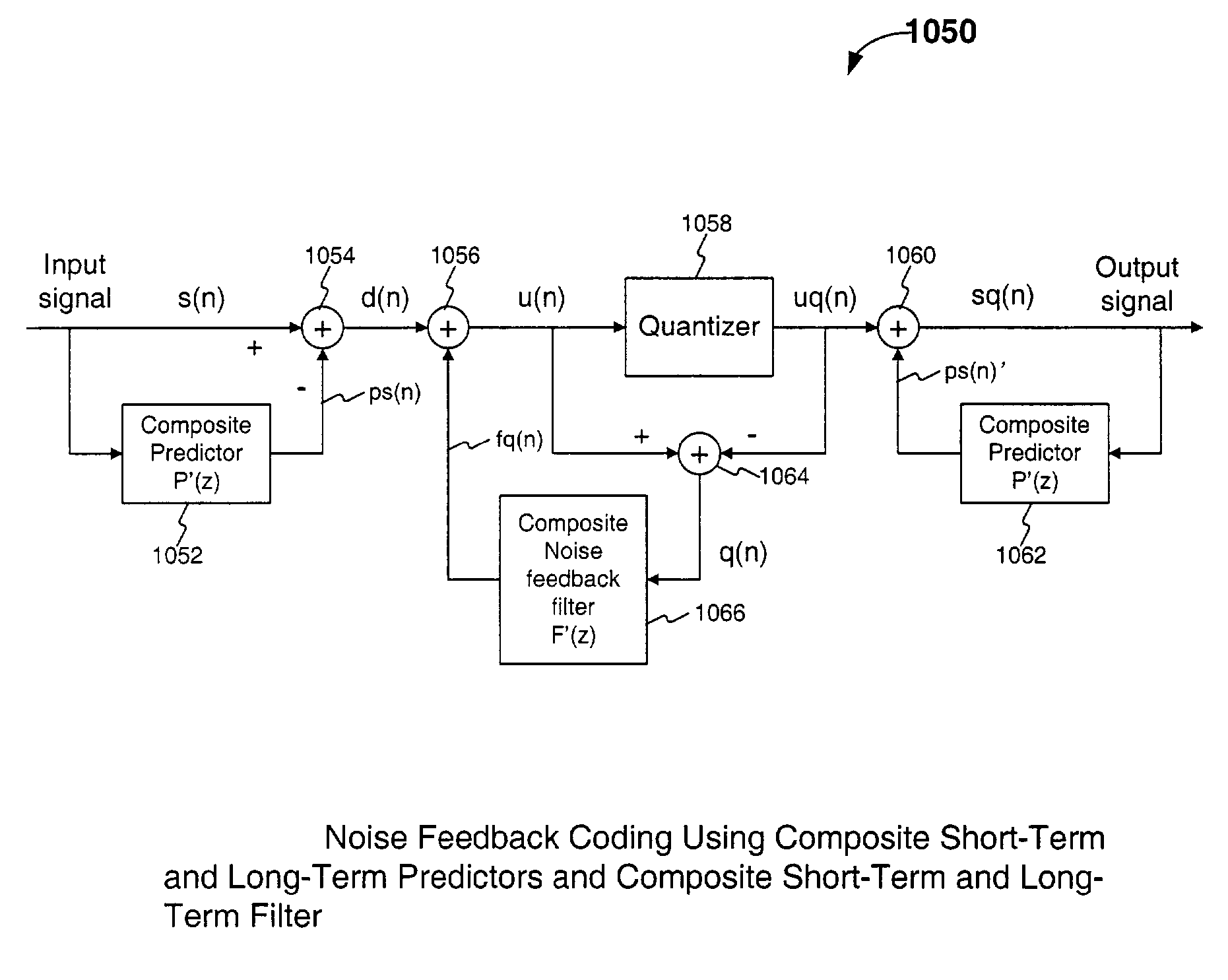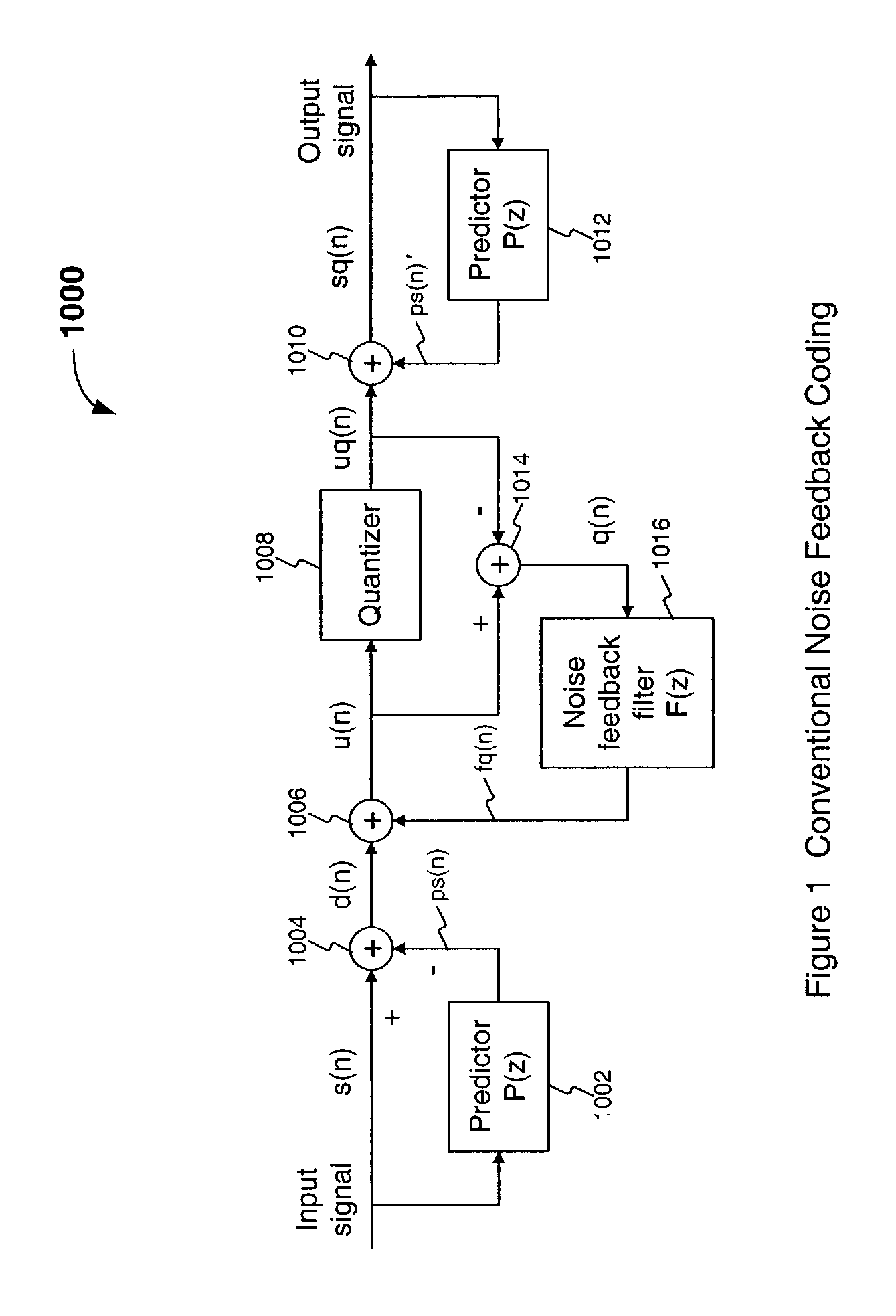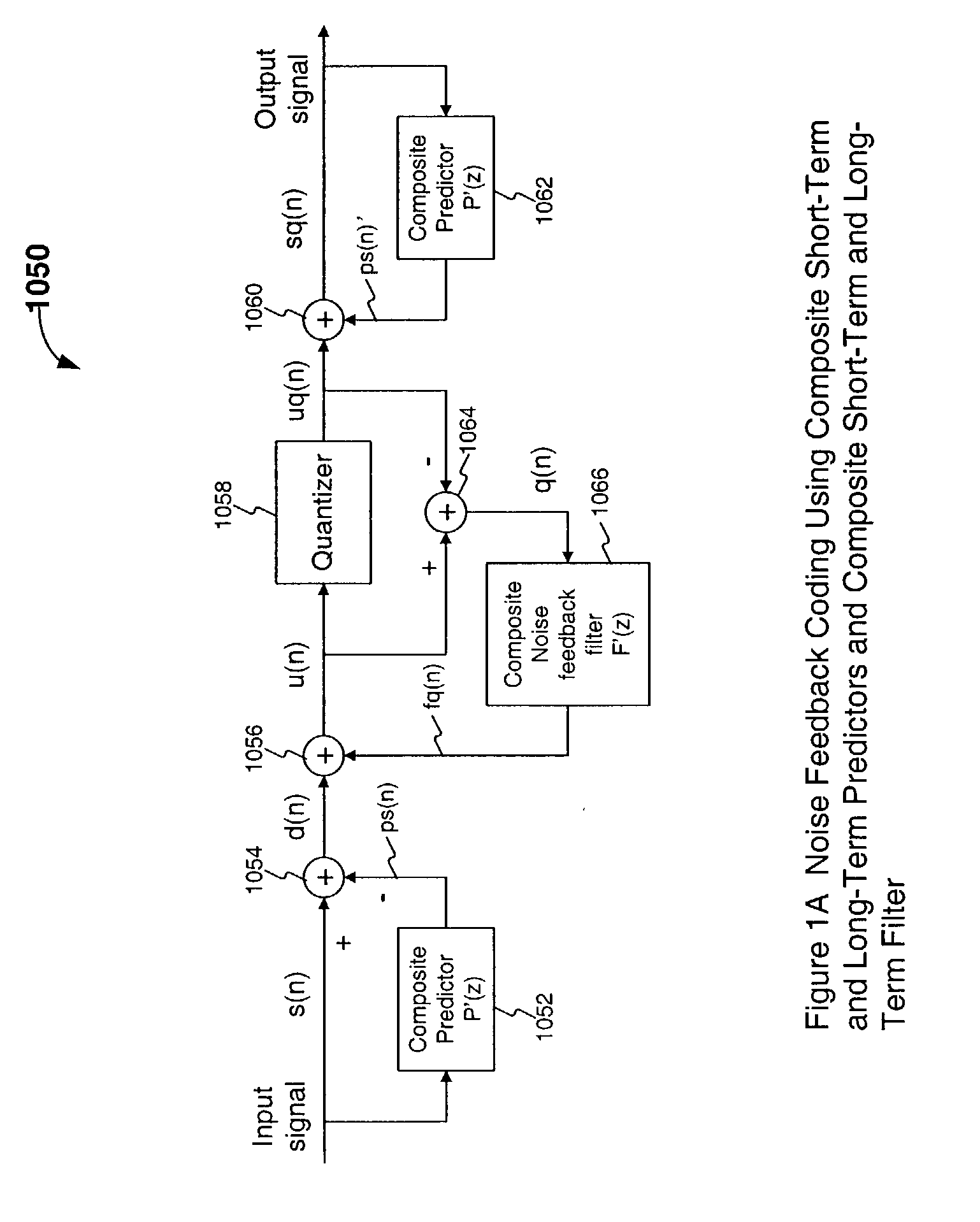Efficient excitation quantization in a noise feedback coding system using correlation techniques
a correlation technique and noise feedback technology, applied in the field of digital communication, can solve the problems of coding speech signals, excitation vq can be relatively complex, and achieve the effect of efficient search
- Summary
- Abstract
- Description
- Claims
- Application Information
AI Technical Summary
Benefits of technology
Problems solved by technology
Method used
Image
Examples
fifth embodiment
[0079] III. Overview of Preferred Embodiment (Based on the Fifth Embodiment Above)
[0080] IV. Short Term Linear Predictive Analysis and Quantization
[0081] V. Short-Term Linear Prediction of Input Signal
[0082] VI. Long-Term Linear Predictive Analysis and Quantization
[0083] VII. Quantization of Residual Gain
[0084] VIII. Scalar Quantization of Linear Prediction Residual Signal
[0085] IX. Vector Quantization of Linear Prediction Residual Signal
[0086] A. General VQ Search
[0087] 1. High-Level Embodiment
[0088] a. System
[0089] b. Methods
[0090] 2. Example Specific Embodiment
[0091] a. System
[0092] b. Methods
[0093] B. Fast VQ Search
[0094] 1. High-Level Embodiment
[0095] a. System
[0096] b. Methods
[0097] 2. Example Specific Embodiment
[0098] a. ZERO-INPUT Response
[0099] b. ZERO-STATE Response
[0100] 1. ZERO-STATE Response First Embodiment
[0101] 2. ZERO-STATE Response Second Embodiment
[0102] 3. Further Reduction in Computational Complexity
[0103] C. Further Fast VQ Search Embodiments
[0104] 1. Fast VQ S...
third embodiment
[0161] As an illustration of this concept, FIG. 3 shows a codec structure where the quantizer block 1008 in FIG. 1 has been replaced by a DPCM-type structure based on long-term prediction (enclosed by the dashed box and labeled as Q' in FIG. 3). FIG. 3 is a block diagram of a first exemplary arrangement of an example NFC structure or codec 3000, according to the present invention.
[0162] Codec 3000 includes the following functional elements: a first short-term predictor 3002 (also referred to as a short-term predictor Ps(z)); a first combiner or adder 3004; a second combiner or adder 3006; predictive quantizer 3008 (also referred to as predictive quantizer Q'); a third combiner or adder 3010; a second short-term predictor 3012 (also referred to as a short-term predictor Ps(z)); a fourth combiner 3014; and a short-term noise feedback filter 3016 (also referred to as a short-term noise feedback filter Fs(z)).
[0163] Predictive quantizer Q' (3008) includes a first combiner 3024, either a...
fourth embodiment
[0172] FIG. 4 is a block diagram of a first exemplary arrangement of the example nested two-stage NF coding structure or codec 4000, according to the present invention. Codec 4000 includes the following functional elements: a first short-term predictor 4002 (also referred to as a short-term predictor Ps(z)); a first combiner or adder 4004; a second combiner or adder 4006; a predictive quantizer 4008 (also referred to as a predictive quantizer Q"); a third combiner or adder 4010; a second short-term predictor 4012 (also referred to as a short-term predictor Ps(z)); a fourth combiner 4014; and a short-term noise feedback filter 4016 (also referred to as a short-term noise feedback filter Fs(z)).
[0173] Predictive quantizer Q" (4008) includes a first long-term predictor 4022 (also referred to as a long-term predictor Pl(z)), a first combiner 4024, either a scalar or a vector quantizer 4028, a second combiner 4030, a second long-term predictor 4034 (also referred to as a long-term predic...
PUM
 Login to View More
Login to View More Abstract
Description
Claims
Application Information
 Login to View More
Login to View More - R&D
- Intellectual Property
- Life Sciences
- Materials
- Tech Scout
- Unparalleled Data Quality
- Higher Quality Content
- 60% Fewer Hallucinations
Browse by: Latest US Patents, China's latest patents, Technical Efficacy Thesaurus, Application Domain, Technology Topic, Popular Technical Reports.
© 2025 PatSnap. All rights reserved.Legal|Privacy policy|Modern Slavery Act Transparency Statement|Sitemap|About US| Contact US: help@patsnap.com



